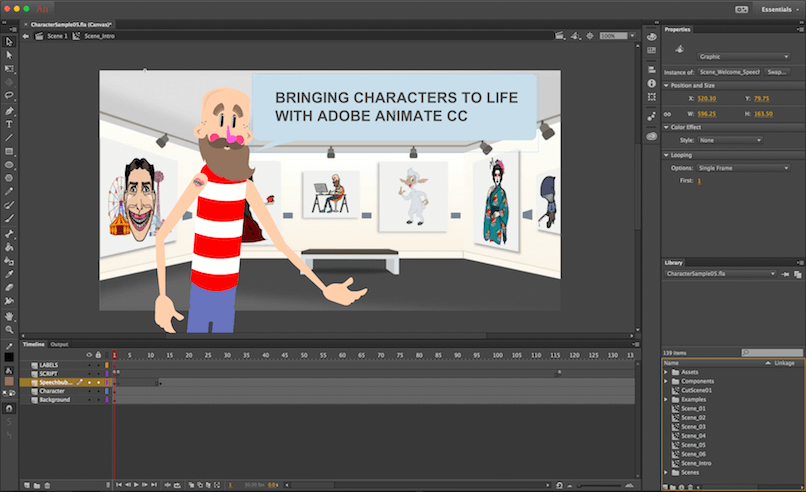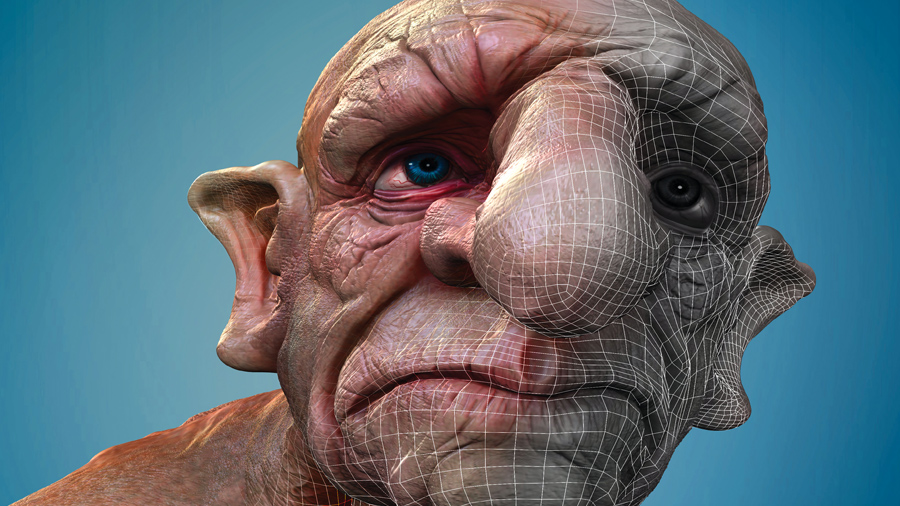Handy Info For Choosing Free Program Downloads
Wiki Article
What Is Adobe Animate? And How Are Versions 2019, 2021 And Cc Distinct?
Adobe Animate is a multimedia authoring program and computer animation software created by Adobe Systems. Adobe Animate lets you create animated vector graphics as well as interactive digital content that can be used on the web mobile, desktop and other platforms. Here's a quick review of the differences between versions 2019 and 2021.
Adobe Animate CC - This is the most recent version of Animate. It includes new features like improved brush strokes, as well as HTML5 canvas templates. Additionally, it offers an improved interface for WebGL and WebGL2 and WebGL2 as well as a redesigned user interface.
Adobe Animate 2019 - This version introduced numerous new features, including support for virtual reality (VR) publishing content and creation, enhancements of the feature for sculpting assets, and an option to export animations to animated GIFs. The update also included several bugs and performance enhancements.
Adobe Animate CC - This version for 2015 came with a new name and several new features. The updated version of Adobe Animate CC included new features, including HTML5 publishing enhancements as well as exporting SVG graphics and a redesign of the user interface. It added support for HiDPI display as well as improved WebGL.
Adobe Animate versions vary in regards to performance, features, and user interface. It is recommended to select the one which best suits your budget and meets your requirements. Follow the top view website for site advice.

What Exactly Is Acid Pro? And How Does It Differ From The Other Versions?
ACID Pro (Digital Audio Workstation) is a software for music production, editing and mixing. It was initially created by Sonic Foundry. MAGIX Software GmbH now owns the product. These are the major distinctions between versions.
ACID Pro 7: Released in 2008, this version comes with many features, including support for VST instruments and effects, MIDI editing, and automation. It has several built-in plug-ins and multichannel audio support.
ACID Pro 8 : This version was released in 2018 and incorporates many of the ACID Pro 7's features and adds some new ones, like the ability for users to import and export AAF file as well as 64-bit architecture support and improved performance.
ACID Pro 9: Released in 2019, this version includes numerous new features like an updated user interface and support for ACIDized loops, MIDI Playable Chopper, and more. It also has improved compatibility with VST plugins, and it supports a variety of audio and video formats.
Overall, ACID Pro's latest versions offer better performance, compatibility and a modern interface. However, they retain the core features that helped it become so popular with music producers. See the recommended discover more on Acid Pro free download for blog advice.

What Are Prism Video Converter's Different Versions And What Differences Can You Expect?
Prism Video Converter, developed by NCH Software, is a software that converts video files between formats. It supports a large range of video file types which include the most popular formats like MP4, AVI and WMV. Prism Video Converter’s free basic version supports all of the most popular video file formats. While it's free, the features are limited compared to the paid versions.
Prism Plus includes Prism Professional along with Prism Business. These versions include more advanced features, such as the ability to batch process and DVD burning. The cost for these versions is according to the features and functions the user needs. Take a look at the most popular Prism Video Converter free download blog for more recommendations.
What Is Zbrush & How Are Its Different Versions Different?
Zbrush is a digital sculpting and paint software that can be used to create stunning 3D models with high resolution and animations. Zbrush is a favorite tool for game developers, artists and designers who want to create visuals and graphics that are of top quality.
Zbrush 1.5 1. The initial Zbrush version was launched in 1999. It introduced the basic capabilities of digital painting and sculpture.
Zbrush 2.0 was released in 2004 and, introduced features such as Zspheres as well as Unified Skinning, which made it easier to create complicated models.
Zbrush 3.0 was launched in 2007. The release introduced Subtool that allowed users to work concurrently on multiple meshes. It also brought new features such as HD geometries displacement maps, and the Zbrush GoZ.
Zbrush 4.0 version, which was launched in 2010, introduced Dynamesh. This feature allowed users to build 3D models without worrying about topology. The new version also came with the ability to sculpt brushes and the capability to create surfaces with sharp edges.
Zbrush 4R8 released in 2017 The version was updated with new features, including the Live Boolean, which enabled users to integrate a 3D models into one object. The 3D text and shapes creation tools were also added.
Zbrush 2018 (released 2018) Version 2018: In this release the new features were added including Sculptris Pro. It allowed users to create freely without having to worry about topology. Additionally, it added new deformers.
Zbrush 2021 (released in 2021): This version introduced new features such as the Dynamics system, which allows users to include physical simulations to their models. The version also introduced new features like NanoMesh, NanoMesh, and the Cloth dynamic system.
Zbrush's capabilities and features are constantly improved with each new release, making the software more powerful. The interface for users and basic workflow of each version remained the same, making it easier to switch between them. Take a look at the top rated more help for more examples.

What Is Microsoft Powerpoint 2010 And What Are The Differences Between Versions 2016 And 2010?
Microsoft PowerPoint is a popular program that lets users to create and present slideshows, usually for business or educational purposes. The software is part of the Microsoft Office suite of applications.Versions of PowerPoint can vary in terms of features and user interface design. Here are a few differences between PowerPoint 2010 and 2016.
Interface for users: The user interface of PowerPoint 2016 was updated with a modern design and a streamlined ribbon toolbar. Certain features were eliminated or moved, while the appearance and feel was simplified.
Collaboration: PowerPoint 2016 introduced real-time collaboration features, allowing several users to edit the same slide at the same time from various locations. This feature wasn't available in PowerPoint 2010.
PowerPoint 2016 includes more design options, including new templates and themes. The program also provides an array of customization options.
Integration: PowerPoint 2016 includes improved integration with other Microsoft Office apps and cloud-based services such as OneDrive and SharePoint. This makes it easier to collaborate and sharing of presentations.
Performance: PowerPoint 2016 has been improved to run faster and more stablely than the previous versions, including PowerPoint 2010.
In general, PowerPoint 2016, compared with PowerPoint 2010 offered more advanced functions and better performance. PowerPoint 2010 is less complicated and offers less options to certain users, based on their preferences and needs.
